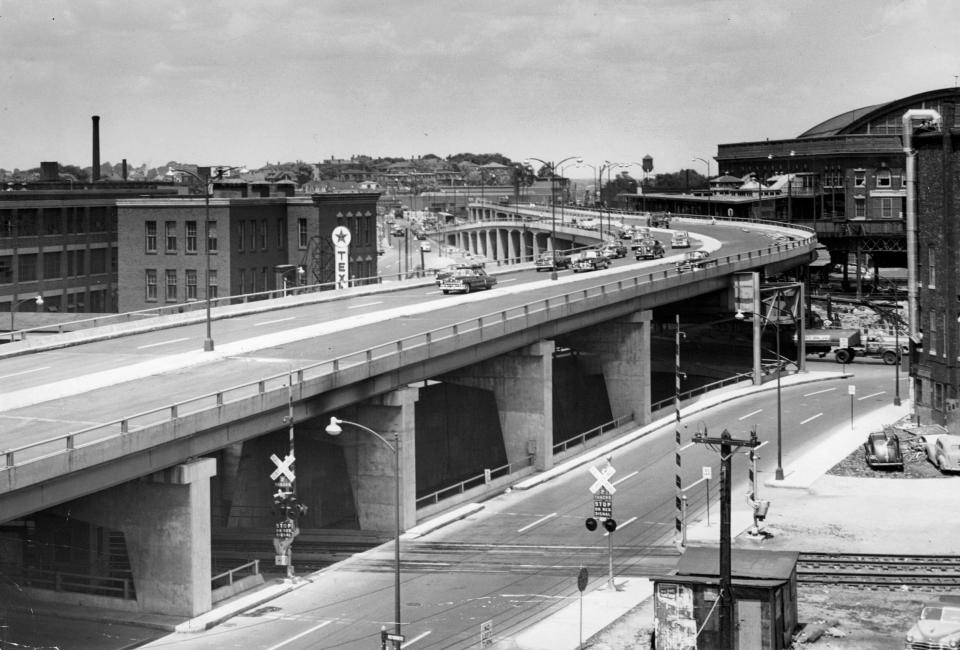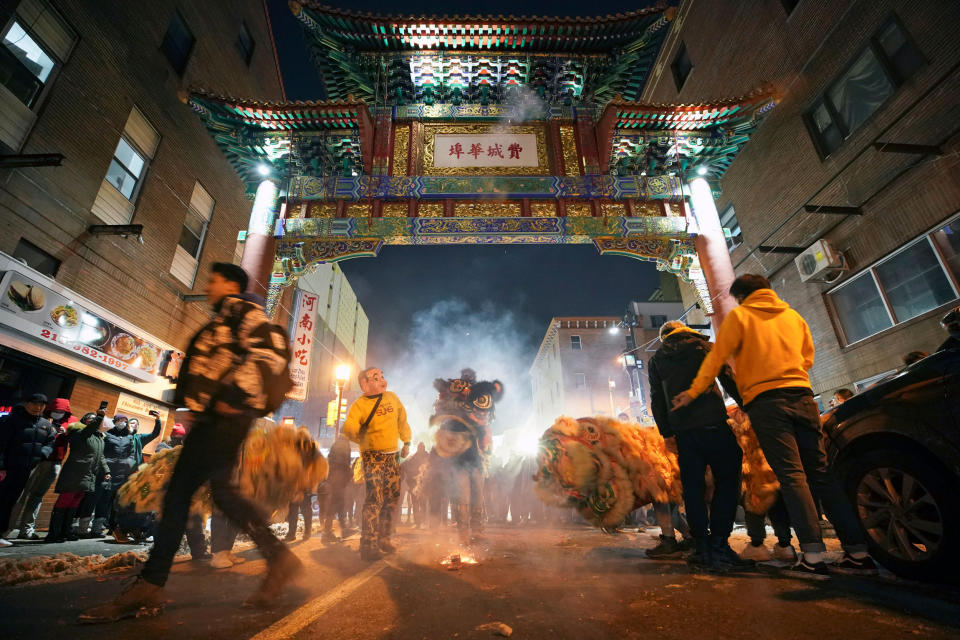Congress looks to undo decades of infrastructural racism to U.S. Chinatowns
Mary Yee was in elementary school when the neighborhood she grew up in, Boston’s Chinatown, was destroyed.
Beginning in the late 1950s, the state built a pair of sprawling freeways, Interstates 93 and 90, through the historic neighborhood and demolished hundreds of row houses and storefronts where working-class immigrants lived and thrived.
For the first time, Congress is directly addressing the harms caused by freeways. The federal infrastructure package that passed in November allocates $1 billion for a five-year pilot program to reconnect communities devastated by highway construction.
Yee recalled playing with other children in the rubble of their homes, many of which were overrun with rats. The destruction triggered an exodus of families, including Yee’s, who felt they’d lost everything they’d built.
“For my generation, the freeways decimated the sense of community and the social connections we had,” said Yee, who became a labor and housing organizer in Philadelphia. “Chinatown became a ghost town.”
Yee said families received relocation money but that it was less than what they had paid for their original homes.

In Boston, the Chinese enclave is in the 90th percentile for traffic exposure compared to the rest of the U.S. population, leading to the worst air quality and the highest childhood asthma rate in Massachusetts. It also has “the least amount of parking spaces and the highest population density,” said Michael Liu, a historian and the author of “Forever Struggle: Activism, Identity, and Survival in Boston’s Chinatown.”
The midcentury freeway construction boom, fueled by the 1956 Interstate Highway Act, divided and destroyed many Black, Latino and Asian neighborhoods across the country. Chinatowns, often near downtown financial districts, suffered some of the heaviest health and environmental damage as a result of the construction and traffic that continue to affect residents today.
In a tweet about the package last year, Transportation Secretary Pete Buttigieg highlighted the legacy of infrastructural racism in Philadelphia’s Chinatown, which the Vine Street Expressway has bisected for a half-century. “Our work to protect AAPIs must include infrastructure that keeps communities safe—and whole,” he wrote, referring to Asian Americans and Pacific Islanders.
Chinatown organizers say grant money from the program can help support a host of infrastructure projects to rebuild their neighborhoods.
Yue Wu, the planning and project manager of the Philadelphia Chinatown Development Corp., is leading an effort to design and develop a partial cap over Vine Street Expressway, which would provide space to build much-needed affordable housing, parks and pedestrian walkways.
“The highway has been a physical and psychological barrier for the neighborhood,” Wu said. “It’s a hard edge that has prevented the community from growing and expanding.”

Accessibility is a serious concern, Wu said, as the expressway separates schools and homes on the north side from the city’s main commercial corridor on the south. As a result, Wu said, parents and children need to cross a highway every day to go to school and shop for groceries.
In the 1970s, Yee helped lead the Save Chinatown movement against initial construction plans for the expressway, which would have razed a church and a school, in addition to hundreds more homes. Should Philadelphia receive funding from the pilot program, she hopes it will go toward affordable housing, senior centers and other facilities that low-income residents desperately need.
“I certainly feel people should be compensated for their pain and suffering,” she said. “The money should extend beyond purely fixing the highway.”
In the 1950s and the 1960s, major interstates and other urban renewal projects split up thriving Chinese enclaves from Seattle to Chicago, razing businesses, cultural institutions and homes and uprooting hundreds of families. (Los Angeles’ original Chinatown was demolished in the late 1940s to make way for the 101 freeway.)
Proximity to interstates also causes traffic accidents in urban Chinatowns. The enclave in Oakland, California, which borders Interstate 980, is home to a cluster of the city’s most dangerous roads, leading to 137 pedestrian collisions from 2015 to 2019. With a half-million-dollar grant, the city’s Transportation Department recently rolled out a multilingual outreach program to improve traffic safety in the neighborhood.
“The effects of freeway construction on Asian communities have historically been overlooked,” said Liu, the Boston Chinatown historian. “It’s more thought of in the segregation of Black and white communities.”
Lydia Lowe, the director of the Chinatown Community Land Trust, said the city should implement mitigation strategies to offset the public health threats to residents, including high-quality filtration systems in apartment buildings and sound walls on freeways to reduce noise pollution.
Because the group is a land trust, its main focus is on buying properties and converting them into permanently affordable homes for poor immigrant residents. At the same time, organizers are working to preserve historic buildings and develop more green spaces.
“We’re trying to re-energize the neighborhood that’s next to the highway so it feels like a community again,” she said.

